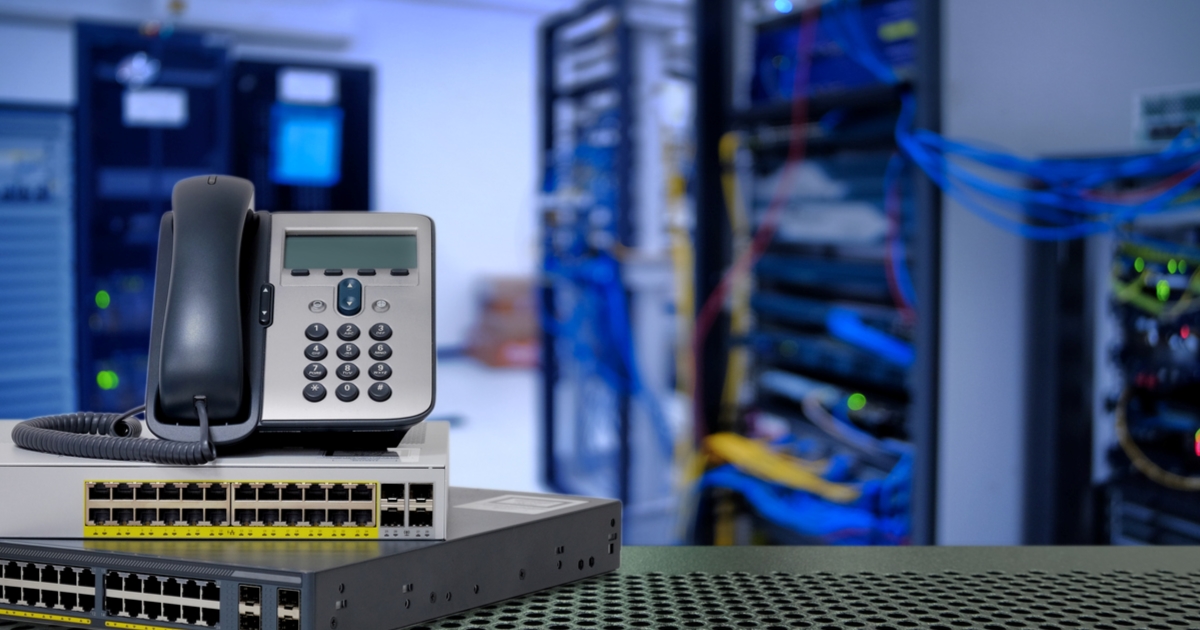Introduction
IP telephony is a complex technology. It develops very quickly, and it seems to us that we discover something new every day. We discover a new term almost every day. It is very easy to get confused by many terms like SIP trunking, SIP trunks, SIP devices, and SIP providers. Don’t worry. We will be your guiding hand through the complicated labyrinths of SIP trunks and other concepts.
What is SIP Trunking?
SIP explained
SIP stands for Session Initiated Protocol. It’s a protocol that initiates sessions, clearly, but what kind of sessions? SIP is a communication protocol that initiates a communication session between two IP devices over an IP network.
SIP acts as a signaling protocol. It is similar to a standard face-to-face conversation. Imagine two people sitting on a park bench next to each other: We’ll call them John and Susan. If John wants to talk to Susan, he’ll initiate a conversation by saying ‘Hi!’. A soundwave flies over the air to Susan, representing John’s intent to start the conversation. She accepts his invitation and sends her response ‘Hi!’ to him, and the dialogue begins. Many more soundwaves fly over the air between them until one of them decides to end the conversation. They exchange their signals that the conversation is over by expressing goodbyes.
Signaling in the IP network acts in the same principle as the face-to-face communication from the example above. IP devices use packets to exchange information. SIP devices use two types of packets: Signaling and Media packets. Signaling packets initiate a session, while media packets are used to exchange media, such as audio, video, screen-sharing, and similar data.
SIP Trunking explained
Session Initiated Protocol works by transmitting data packets from one SIP address to another. SIP can deliver voice data, as well as instant messages and video, over the Internet. As a result, SIP is an exchange of information over the Internet. Once a SIP connection is established, the protocol only needs milliseconds to transfer data from one environment to another.
SIP Trunks allow you to connect your company’s on-premise PBX (or virtual PBX) to the internet and make phone calls. It is a virtual connection to the PSTN.
“Trunk” is a term used in the PSTN network, and it refers to a collection of copper phone lines shared by a group of consumers. Since such physical lines do not exist in SIP trunking, the word “trunk” refers to virtual lines.
How Does SIP Trunking Work?
In VoIP telephony, the analog signal is converted to ones and zeros (decoded) and put in media packets that travel over the IP network to its destination. When the packet arrives, the ones and zeros from the packet are reassembled (encoded) and played back to the recipient. The same applies to the video signal. The image from the video call is encoded and sent in a media package to the user on the other side, where it is reconstructed and played.

Every second of an audio or video call contains countless packets that travel back and forth.
The protocol that ensures that the person making the call receives the correct IP address from the person calling and which codec to use is SIP.
You can look at SIP as instructions telling John’s phone how to get Susan’s SIP device if John decides to call her using his VoIP phone. The SIP protocol will know the phone’s location (IP address), which codec to use, and how to construct and send IP signaling packets.
What is the role of Codecs in SIP Trunking?
Codecs’ job is to convert analog voice signals into digital format and compress them so they can travel over the internet. Codecs G.711 and G.729. are the two most widespread SIP trunking protocols.
G.711 is a high-quality voice codec that does not compress the signal, whereas G.729 saves bandwidth at the expense of quality by compressing it.
SIP and VoIP: What does this mean for VoIP?
You will often find SIP and VoIP mentioned together, but they are not the same. VoIP is a term that describes any phone call made over the internet instead of using a classic telephone line. SIP is one of the technologies that make VoIP happen.
When combined together, SIP and VoIP facilitate a range of online communication features, including:
- audio calls
- video conferencing
- instant messaging / group chat
- sending and receiving media files
- mobile phone apps
What is a DID number?
DID is an abbreviation for Direct Inward Dialing number. This service allows you to associate numbers to specific phones. When a person calls that DID number, it bypasses the automatic answering machine, queue, and/or the need to dial an extension number.
Your phone carrier forwards the incoming call via SIP trunk to your PBX, which then routes the call to the correct recipient, and that’s it. There are no additional infrastructure costs with DID numbers, and you can assign them to your sales or customer service departments.
If you need a high-grade quality Softswitch to handle your calls, Bicom Systems’ PBXware is the right solution. PBXware is available in the Business, Contact Center, and Multi-Tenant Editions, each supporting specific features maximizing performance, reliability, and expandability.

Key Benefits & Values of SIP Trunking
SIP Trunking effectively eliminates the need for traditional landline telephones by transmitting data over the internet instead of phone lines. You can talk, chat, send and receive documents and start video conferencing over the same network. You can do all that at the same time if needed. SIP trunks are there to power the Voce of Internet Protocol worldwide.
Here are some benefits you get from switching to SIP trunking:
- Cost savings – As with any VoIP-related topic, the main advantage of SIP trunks is the financial benefit. Companies can save a lot of money by cutting down installation, operation, and maintenance costs.
- Long-distance & International calls – Another way of cutting expenses with SIP trunking as it allows you to make cheap long-distance calls over the internet.
- High Scalability – Another significant benefit of SIP trunking is its excellent scalability. You may quickly add more phone lines (SIP Trunks) and only pay for what your business needs.
- Flexibility & Mobility – Nowadays, your incoming and outgoing phone calls can be redirected to your softphone (mobile phone). You can be away from your desk with more freedom than ever and still not miss your calls or important messages and meetings! The ability to work from home is a must by today’s standards.
- Enhanced productivity – SIP trunking provides effortless communication for you and your employees, which greatly increases productivity.
- Unified Communications – SIP trunking takes you closer to a unified communications solution, often referred to as Unified Communications as a Service (UCaaS). Our in-house unified communications apps, gloCOM (Desktop app) and gloCOM GO (iOS & Android), are good examples of how UCaaS can enhance your productivity and your virtual presence. Make calls, start video conferencing, or exchange documents within one powerful business app.
Conclusion
Let’s sum it up:
- SIP trunking offers numerous benefits. High-scalability, mobility & flexibility, and unified communication apps, are just some of them.
- Although often mentioned interchangeably, SIP and VoIP are not the same.
- SIP trunks are virtual connections that connect your company’s PBX with the internet. SIP trunking is a protocol that enables IP telephony, meaning you can make calls over the internet (VoIP). NOTE: Older PBX systems need a SIP-ISDN gateway, but this is not the case with newer ones.
- With DID numbers (Direct Inward Dialing number), you can have multiple phones over the same line (network).
If you think your company deserves to enjoy all these benefits, maybe we can help. With our line of products and solutions tailored to your needs, you can benefit from IP telephony and elevate your business on many levels.
Please feel free to contact us if you have any questions. Our professionals are glad to assist you and are prepared to answer any questions you may have.

